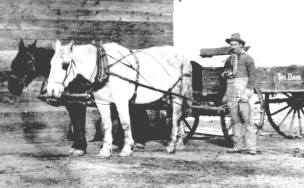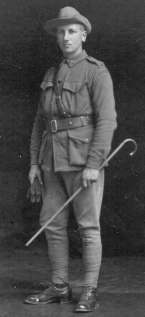The menu above provides links to my other web pages.
Family history
Working backwards from the present:
Siblings
I am the eldest of four, born 1947. Chivalry prevents me from giving the dates of birth of my sisters Rosie and Jan, but Steve is the baby of the family, born in 1956.
The rest of this page remains to be updated with stuff about my mother's Irish ancestry. In the meantime here are some biographical notes and links about the Scottish side.
Father: George Edward Smythe
My father, born 1920, became an electronic engineer who continually developed and updated his skills throughout a unique period of rapid technological evolution. Over half a century, starting with steam and internal combustion engines, he mastered the arts of electrical and electronic engineering (valves, then transistors); latterly he came expert in digital electronics and even in computer programming.
In his early teens his practical talents came together with his scientific aptitude to solve a problem on the farm where he was raised in Aberdeenshire. The stationary steam engine there would work for a few minutes until it got hot, then it would seize up. George correctly diagnosed that the piston rod, which had been welded to repair a crack, was expanding and jamming in its collar. The solution was to grind it 'hollow' at the weld by an exact amount calculated from the coefficients of thermal expansion of steel and welding metal. After grinding, when it got hot the welded area of the rod expanded to the right diameter for its sleeve, and no longer seized up.
He was sent to Fraserburgh Academy. There, at about the age of 15, he built what was probably the first television in the north of Scotland. It received the long-wave test signals from the BBC in London, and used a mechanical scanning system to create the picture (this was the original design of John Logie Baird, later superseded by electronic scanning). He went to Leith Nautical College in 1937 to study electronic engineering, as his local university (Aberdeen) did not offer such a modern subject in that era.
He joined the merchant navy as a radio officer, and applied to enlist in the Royal Navy on the outbreak of war in 1939. But he was told not to join up, as his skills would be of much more use to the Allies if he could continue his job as radio officer on neutral merchant ships. So that's how he became a spy. His cover was to take on the persona of a rabid anti-English Scottish Nationalist, who refused to get involved in 'England's war'. He was able to pick up useful intelligence in the neutral ports such as Lisbon and Dublin, as well as observing what went on at sea. As the radio officer he could send back coded messages to the UK. Back on leave in Aberdeenshire he had to go through the local operator to phone Whitehall with his reports, so of course everyone in the village knew that he was up to something Top Secret.
Eventually he joined the Royal Naval Volunteer Reserve for the rest of the war, ending up in Singapore by 1945. Despite having fought the Japanese, in the 1970s he began to learn Japanese after a business visit to Japan with Philips, the company he worked for for the last 30 years of his career. His interest in Japanese language and culture remained until his death in 1989.
Grandfather: James Hugh Smythe
James was born in 1882 in Aboyne,
Aberdeenshire. He was educated in Echt and subsequently at Robert Gordon's
College, Aberdeen, but then emigrated to Canada. My grandmother said that he joined the Klondike (Yukon)
Gold Rush, which began in 1897 and continued for several years. He was also a
cattle rancher in Alberta [photo from 1910], and turned his hand to
clerking, cooking, storekeeping, navvying and river-dredging. Then he trekked to
California to become a fruit-farmer.
emigrated to Canada. My grandmother said that he joined the Klondike (Yukon)
Gold Rush, which began in 1897 and continued for several years. He was also a
cattle rancher in Alberta [photo from 1910], and turned his hand to
clerking, cooking, storekeeping, navvying and river-dredging. Then he trekked to
California to become a fruit-farmer.
Finding himself in St Louis once without a bed for the night, James bluffed his way aboard a Mississippi boat advertising for a ship's engineer. Familiar with steam engines, but knowing little of the new-fangled internal combustion engine which had just become his responsibility, he reckoned that he would at least get one meal and a bed before being fired. However, he managed to learn the essentials of the new engine overnight, and thus retained his job.
 He emigrated to South Australia to join his elder brother Francis. Here he drove
a Model T Ford across the continent from south to north. In 1914 on the outbreak
of war he enlisted as an ANZAC in the 10th Battalion of the Australian Infantry
[photo]. He fought at Gallipoli. His right hand was disabled by a wound
received at Météren (10 km SW of Ypres), and his lungs were permanently damaged
by mustard gas in the Somme; as a result he suffered from bronchitis for the
rest of his life.
He emigrated to South Australia to join his elder brother Francis. Here he drove
a Model T Ford across the continent from south to north. In 1914 on the outbreak
of war he enlisted as an ANZAC in the 10th Battalion of the Australian Infantry
[photo]. He fought at Gallipoli. His right hand was disabled by a wound
received at Météren (10 km SW of Ypres), and his lungs were permanently damaged
by mustard gas in the Somme; as a result he suffered from bronchitis for the
rest of his life.
After the war, during which he married Janet Murray, he returned to farm near Adelaide, South Australia. Their two sons George and Murray were born in Australia, but the family returned to Scotland in 1925 due to James's ill-health. For three years they rented a one-acre croft at Craigshannoch, on the northern slope of the Hill of Fare near Echt. There was one cow and some hens, and their living was supplemented by the Australian war pension of 16/- (shillings) a week (80p in decimal currency).
Between 1928 and 1935 the family rented a larger croft at Barrowsgate, Drumoak. During this period he met and befriended Lesley Mitchell. The Lewis Grassic Gibbon page describes James and his sister's links to this author's classic work Sunset Song. Although the years at Barrowsgate are remembered by Murray as a happy period, at one period James took to bed for 15 months after seeing a film about the Great War in Aberdeen, reviving his shell-shock. Presumably the film was All Quiet on the Western Front. George by this time (c. 1934) was away at school in Fraserburgh. Twelve year old Murray (in 1935) had to scythe by hand the 1 acre of corn in front of the house, otherwise the family would have starved. Subsequently the croft fell into dereliction for many years, but in 1998 the farmhouse and outbuildings were renovated and put on the market in two lots at £495,000 each.
James was a storyteller and radio broadcaster. He published a farming column in the Aberdeen Press and Journal newspaper under the byline Barrowsgate, which was not really a pseudonym, as farmers were known by the name of their farm rather than by their own surname. He wrote and published in 1933 a slim volume of whimsical and humorous poems written in the Doric dialect of NE Scotland. I now have his own copy of this book, The Blethers o' Barrowsgate . He contributed his considerable knowledge of the vernacular to the compilation of the Scottish National Dictionary.
James, my paternal grandfather, died in 1962 from bronchitis after a severe winter; the mustard gas had eventually caught up with him after 45 years. Coincidentally he died within hours of the death of my maternal grandmother in Ireland.
Great-grandfather: George Henderson Smyth
As a young man George worked as an under-gardener ... [to be completed]
